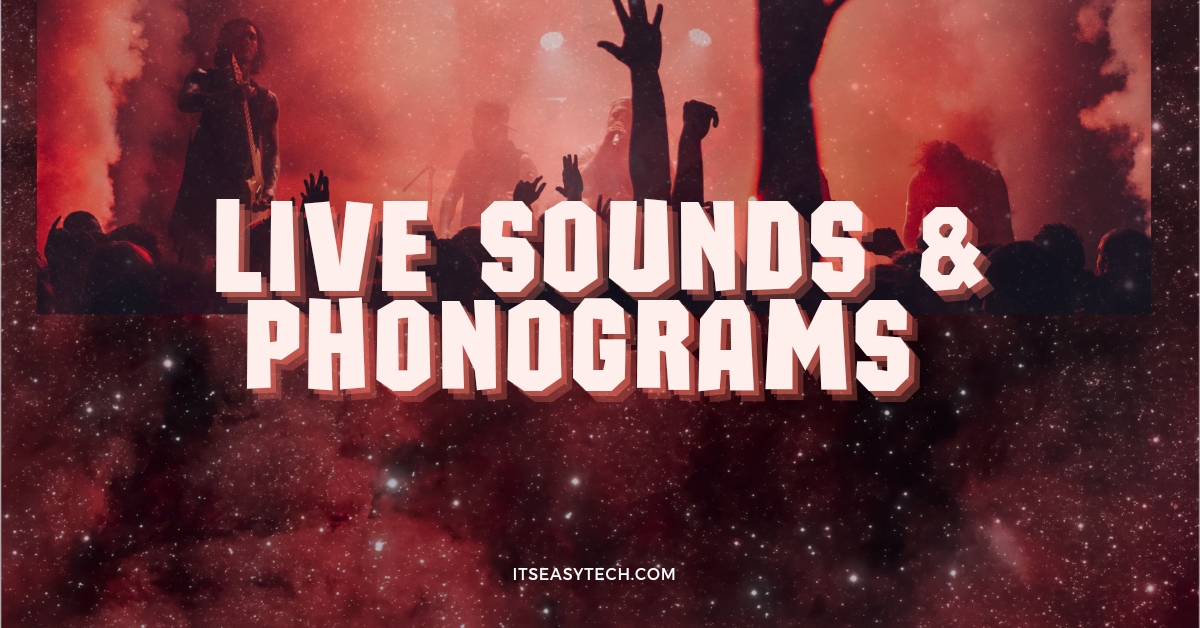This article is about live musicians and the tricks they go to in order to give the listener the most pleasure from the concert and…fool them as much as possible.
This article is aimed at people who don’t understand concert sound, and is designed to help them understand the live performance process.
Here we will learn how artists perform in concerts. For clarity, I will show the performance patterns in the form of a list and an algorithm:
1. PERFORMING WITH A BACKING TRACK
The sound check is absent or brief. The musician or band takes the stage. The musicians have instruments in their hands, the vocalist has a microphone. The equipment on stage is a moulage, used only for the picture. The sound engineer is at the console and plays a key role in the artist’s performance, as his or her mistake can cost the artist his or her reputation. In this performance, his job is to turn the soundtrack on and off in time.
Only the monitors work on the stage so that the musicians can hear the sound and get their movements to the royalty free music. The musicians pretend to play and the vocalist pretends to sing, but they don’t make any sounds.
It’s clear: The audience hears the sound and sees the musicians playing, it’s more of a show than a concert. The deception is obvious. I think a quarter of those attending the concert guess that they are being deceived, but they are being deceived beautifully. That’s why such artists have an audience of their own for the most part.
2. A FULL-PLUS PERFORMANCE
The sound check is absent or brief. The artist or band takes the stage. The musicians have instruments in their hands and the vocalist has a microphone. The sound engineer turns on the music and blends the sound of the instruments and voice into the phono signal.
All the equipment is working on stage – there are monitor lines, guitar and bass amplifiers, a drum kit, all the equipment is voiced. The musicians really play, the vocalist sings. But they play on top of the same soundtrack. That is they repeat what was recorded in the studio, but do it live.
You can’t call it cheating as such, but it is present nevertheless. Such performances are widespread nowadays because the sound quality is much higher comparing to a live performance, but the cost and speed of sound tuning are lower. The convenience and benefits of such performances can be seen with the naked eye.
3. LIVE SOUND
The concert is preceded by a lengthy sound check. Musicians appear on stage long before the performance, instruments and voices are tuned. Once the concert begins, the sound engineer fully performs his or her function, unlike the previous items. In this performance, all the sound comes from the stage, so they rely only on the sound that was adjusted at the sound check.
This is the difficulty of live sound as opposed to performing with backing tracks and phonograms. You can’t hide behind a recording, the listener only gets what is here and now. But that’s also the beauty of a live performance. Although the musicians play the same thing, but each time is not like the previous one, there is a moment of improvisation.
And the listener gets his pleasure, because he hears not the record created in the studio some time, but the sound, the performance and the emotions of the performer, which are born before his eyes.
4. MINUS PERFORMANCE
Performing with the minus can be divided into two categories:
In the first, the algorithm is similar to the last. Only in the live sound of the band is mixed with a recording, which is put by a sound engineer. It contains backing tracks, effects, backing vocals, and instruments that are not present or cannot be present on stage. It is not a phonogram as everything is performed live and the recording only embellishes the performance.
In the second, the performer, whether he is a vocalist or an instrumentalist, performs his part live, and the background for him is a recording (minus tape) to which he plays. Sometimes you can find a live performance of the soloist to the minus, and musicians standing in the form of scenery, depicting the performance of the minus.
Possible other versions of performances are interpretations of the above-mentioned ones or their partial mixing.
Of course, each performer chooses how to perform. Everything depends on funds invested in the performance and the subsequent return, on the skill of the performer, on the technical equipment of the venue, on the reputation of the performer and his abilities.
How Live Sound Differs from Phonograms
Live sound differs from phonograms in many ways. Live sound is the sound of music or speech that is produced by a live performance, either in a studio or in a live venue.
Phonograms are recordings that are made from a piece of audio equipment, such as a microphone, or a tape recorder. Live sound is more natural and less processed than a phonogram. It often has a more organic, dynamic sound that can be difficult to reproduce with a phonogram.
This can be attributed to the fact that live sound involves a lot of variables, such as the movement of the performer’s body, their breath, the reverberations of the space, and the acoustics of the venue. All of these variables create a unique soundscape that is difficult to recreate with a recording. Live sound also has a more immediate and impactful effect on the audience. I
t can be felt in the energy of the room and the atmosphere created by the performance. It can also create a more intimate connection with the audience as it gives them a chance to experience the music as it is being created in the moment. Phonograms, on the other hand, are recordings that are made from audio equipment. Although they are often of a higher quality than live sound, they are also more processed and can be more predictable.
This can lead to a more sterile and sterile sounding recording that lacks the dynamism and organic feel of live sound. Overall, the difference between live sound and phonograms is striking. Live sound is more immediate, organic, and impactful. It can create an atmosphere and connection between the performer and the audience that is difficult to recreate with a recording.
Phonograms, on the other hand, are more sterile and predictable, but can often produce a higher quality recording. Ultimately, the choice between live sound and phonograms comes down to the preference of the artist and the type of performance they are looking for.
Tips for Mixing Live Sound and Phonograms
Mixing live sound and phonograms is an art form that is essential to making your performance sound great. Whether you’re a live performer, a DJ, or a sound engineer, knowing how to mix live sound and phonograms can dramatically improve the quality of your sound.
Here are some tips for mixing live sound and phonograms:
1. Make sure your sound system is properly setup. Good sound equipment and a well-designed sound system are essential for achieving great sound. Make sure that your speakers and other components are properly positioned and configured so that they deliver the optimal sound quality.
2. Understand your environment. Different environments have different acoustical properties and these can affect the quality of your mix. Knowing how to adjust your mix to account for these differences can make a huge difference in the overall quality of the sound.
3. Pay attention to the mix. One of the keys to a great mix is to pay attention to the details. Make sure that you’re dialing in the right levels and EQ settings for each sound source.
4. Consider using effects. Effects such as reverb and delay can really enhance your mix. Experiment with different effects to find out which ones work best for you.
5. Practice makes perfect. Don’t expect to be perfect the first time you mix. Learning to mix live sound and phonograms takes time and practice.
6. Listen to professional mixes. Listening to professional mixes can be a great way to learn. Pay attention to how different elements are balanced and how effects are used.
7. Learn from your mistakes. Don’t be afraid to try things out and make mistakes. Mistakes can be great learning tools and help you become a better mixer. Mixing live sound and phonograms is an art form that requires skill and patience.
With practice, anyone can learn how to mix live sound and phonograms effectively and create great sounding mixes.












